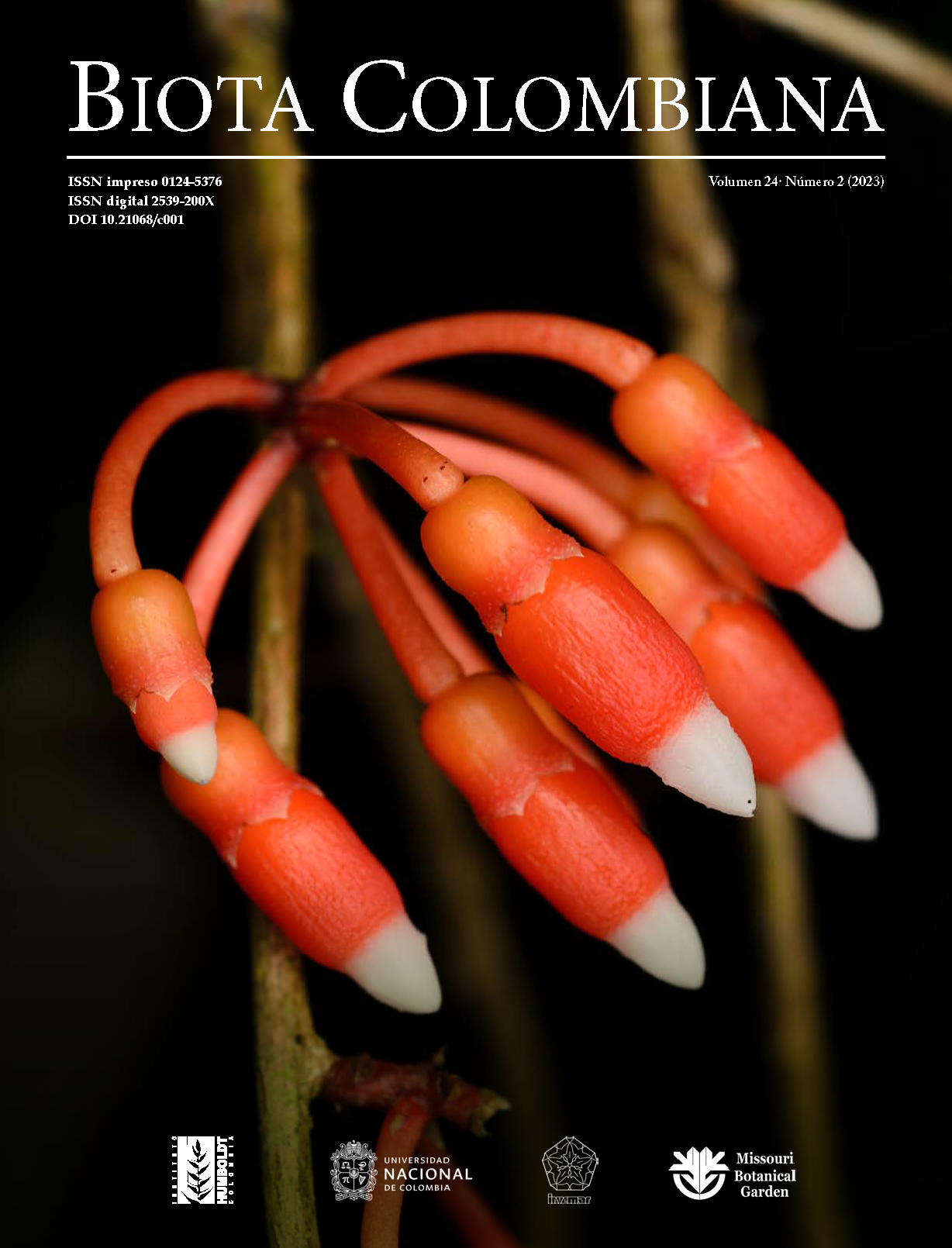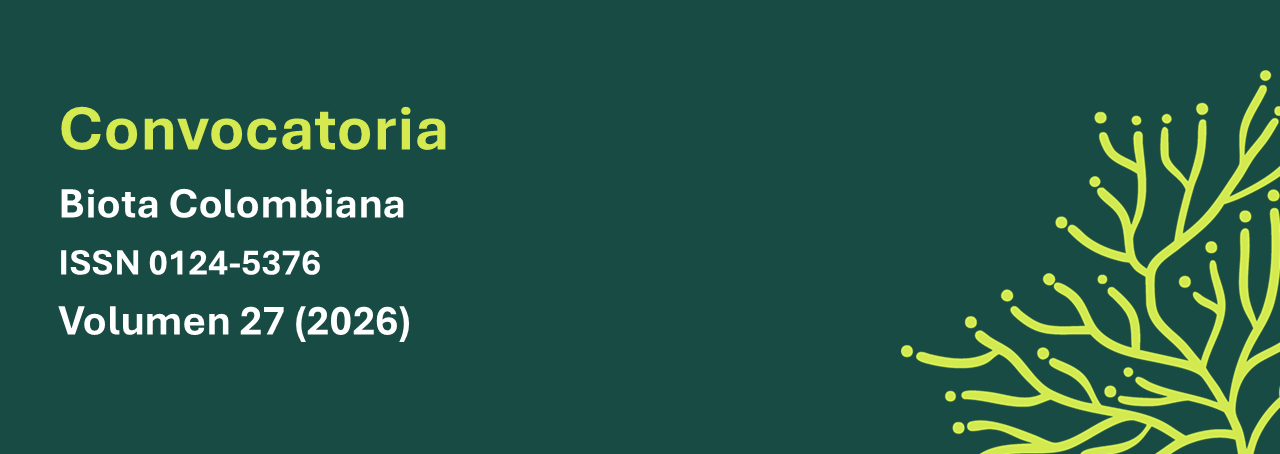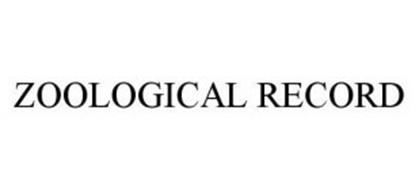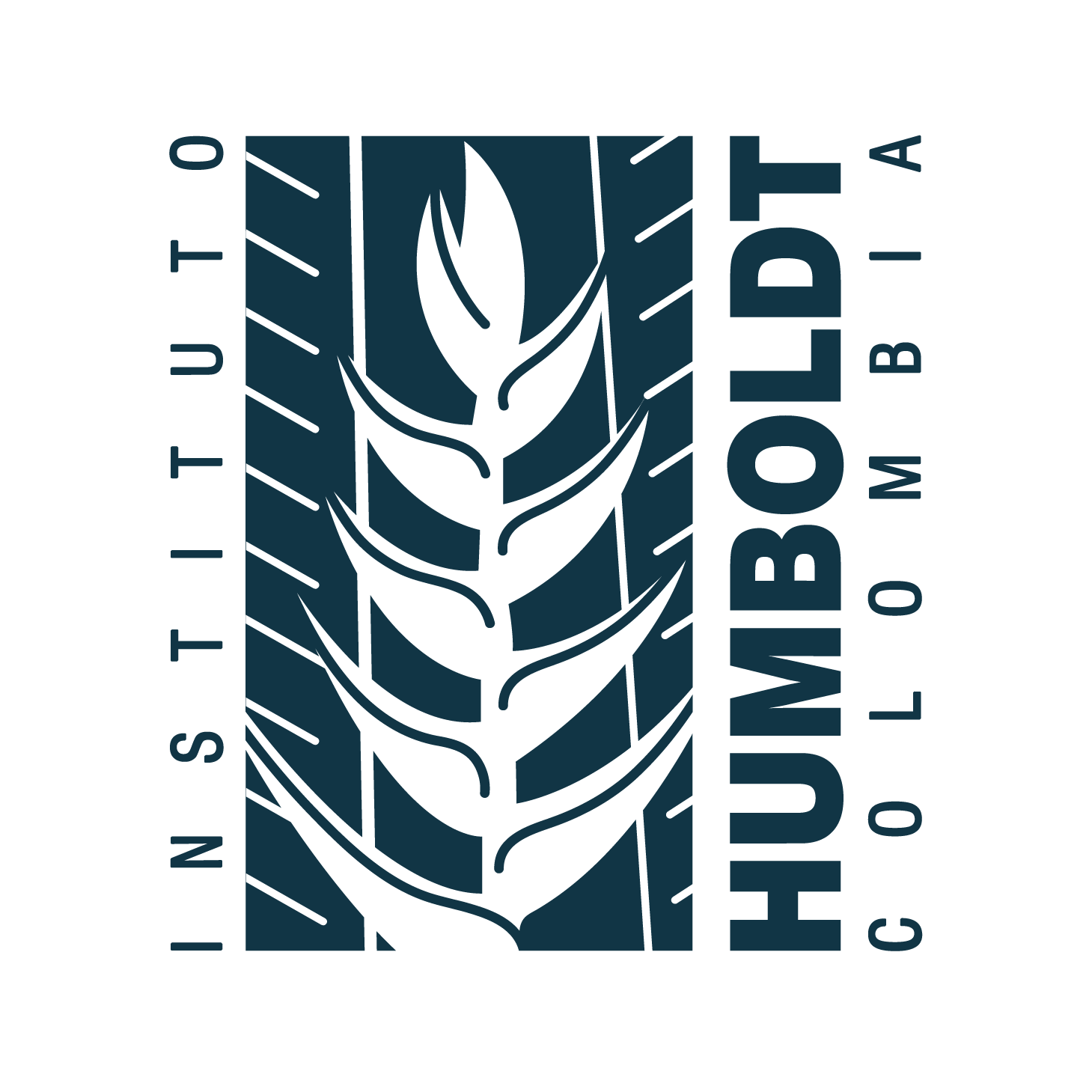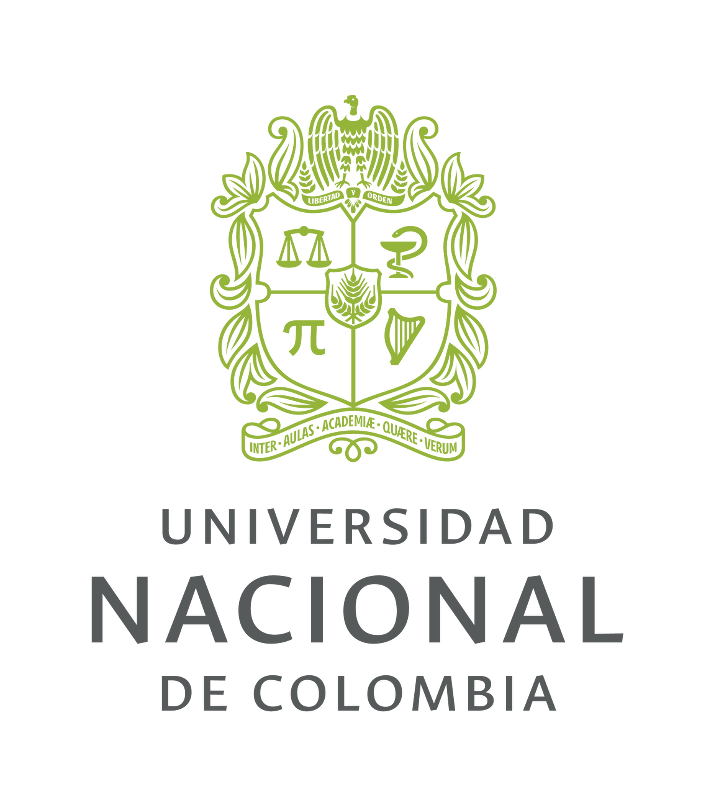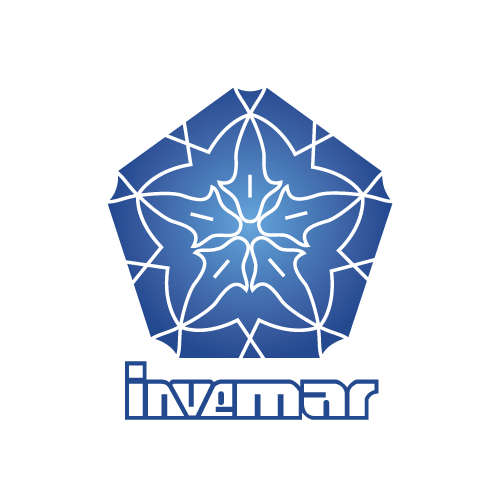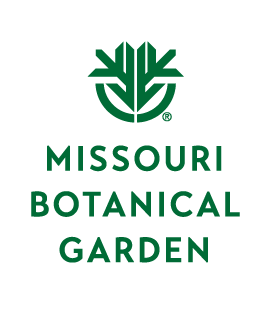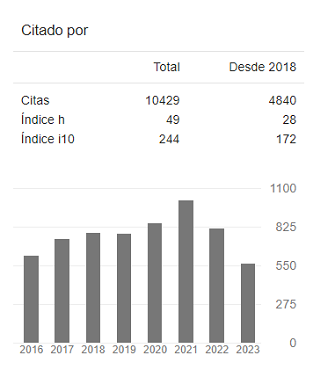Recibido: 21 de octubre de 2022; Aceptado: 14 de febrero de 2023; : 1 de julio de 2023
Abstract
We report ten new records of Odonata, including the true distribution of Acanthagrion yungarum Ris, 1918 in Colombia. The genus Dolonagrion Garrison & von Ellenrieder, 2008 is reported for the first time in the country with notes of its habitat. The other eight new records are A. amazonicum Sjöstedt, 1918, A. phallicorne Leonard, 1977, A. truncatum Selys, 1876, Mesoleptobasis cantralli Santos, 1961, Metaleptobasis lillianae Daigle, 2004, Neoneura denticulata Williamson, 1917, Neuraeschna maya Belle, 1989, and Protoneura klugi Cowley, 1941. A map of localities and photographs of the species are provided.
Keywords:
Acanthagrion, Antioquia, Amazon basin, Dolonagrion fulvellum, Orinoco basin.Resumen
Reportamos diez nuevos registros de Odonata, incluyendo la verdadera distribución de Acanthagrion yungarum Ris, 1918 en Colombia. Se reporta por primera vez el género Dolonagrion Garrison & von Ellenrieder, 2008 en el país, con notas de su hábitat. Los otros ocho nuevos registros son A. amazonicum Sjöstedt, 1918, A. phallicorne Leonard, 1977, A. truncatum Selys, 1876, Mesoleptobasis cantralli Santos, 1961, Metaleptobasis lillianae Daigle, 2004, Neoneura denticulata Williamson, 1917, Neuraeschna maya Belle, 1989 y Protoneura klugi Cowley, 1941. Se proporciona un mapa de las localidades de colecta y fotografías de las especies.
Palabras clave:
Acanthagrion, Antioquia, cuenca del Amazonas, cuenca del Orinoco, Dolonagrion fulvellum.Introduction
Although the knowledge of Odonata in Colombia has considerably increased in the last ten years, the dragonflies and damselflies of some areas are still poorly known. This is particularly true for most peripheral departments (Palacino‑Rodríguez et al., 2022) where collecting trips are scarce due to logistic, political, or funding problems.
The efforts of Colombian odonatologists combined with the recent peace agreement have contributed to reducing this gap of knowledge, especially in those territories previously inaccessible to researchers. Here we present ten new records of Odonata for undersampled departments such as Vaupés, Caquetá, Putumayo, Vichada, and Amazonas, as well as the more studied Antioquia and Meta. These findings increase the total number of Odonata species reported from 487 (Stand-Peréz et al., 2021; Álvarez-Álvarez et al., 2021, 2022; Bota-Sierra et al., 2022; Aristizábal-Botero et al., 2022; Florez et al., 2023) to 497 in Colombia.
Materials and methods
We examined material deposited at the Entomological Collection of the C. J. Marinkelle Natural History Museum at Universidad de los Andes (ANDES-E) in Bogotá, the Entomological Collection of Universidad de Antioquia (CEUA), and the Entomological Museum at Universidad Nacional de Colombia, sede Medellín (MEFLG), in Medellín, Colombia. The identification was carried out using taxonomic keys provided by Leonard (1977), Garrison (1999), Garrison & von Ellenrieder (2009), Garrison et al. (2010), von Ellenrieder (2013), von Ellenrieder & Garrison (2017). We elaborated the map using Geographic Information System QGIS 3.16 Hannover.
Results
Here we report ten species for the first time in Colombia, including the first record of the monospecific genus Dolonagrion. We also provide some comments about the true distribution of Acanthagrion yungarum in Colombia (Figure 1).
Figure 1: Colombian map with Odonata new occurrences: 1. Vaupés, Mitú, Cucura; 2. Caquetá, Cartagena del Chaira, (Remolinos del Caguán, Vereda Palmichales); 3. Meta, Villavicencio, Corpoica; 4. Meta, Acacías, Sector Brisas del Orotoy; 5. Putumayo, Mocoa, vereda Caliyaco; 6. Vichada, Puerto Carreño; 7. Meta, La Macarena; 8. Amazonas, Leticia, Reserva Natural Natura Park; 9. Antioquia, Chigorodó.
Acanthagrion amazonicum Sjöstedt, 1918
Specimens examined: 7 males (Figure 2a). Colombia, Vaupés, Mitú, Cucura, 1°12’03.2’’N, 70°10’45.8’’W, 191 m.a.s.l., 23-09-2014, M. Sánchez & E. Realpe leg, ANDES-E 18578, 18579; Vaupés, Mitú, 1°17’30.1’’N, 70°15’20.2’’W, 176 m.a.s.l., 24-09-2014, M. Sánchez & E. Realpe leg, ANDES-E 21611-21615.
This species was so far known from the Amazon rainforest of Brazil and Peru (Garcia Junior et al., 2022; Hoffmann, 2009), and the present finding extends its range north to the Amazon region of Colombia.
Acanthagrion phallicorneLeonard, 1977
Specimens examined: 1 male. Colombia, Caquetá, Cartagena del Chairá, Remolinos del Caguán, vuelta trampa, 0°34’02.7’’N 74°26’00.3’’W, 197 m.a.s.l., 24-07-2018, Y. Cano leg, ANDES-E 22779.
This species is widely distributed in the Amazonian forest from Ecuador to Brazil (Butt, 1995; Garcia Junior et al., 2022; Mauffray & Tennessen, 2019) so its presence in the Colombian Amazon is not surprising. This male was found in a flooded forest adjacent to the Caguán River.
Acanthagrion truncatum Selys, 1876
Specimens examined: 3 males (Figure 2b). Colombia, Meta, Villavicencio, Corpoica, estación “La Libertad”, 4°03’43.0’’N, 73°28’09.0’’W, 525 m.a.s.l., 11-12-2006, L. Pérez leg, ANDES-E 9052; Meta, Villavicencio, Corpoica, estación “La Libertad”, 4°04’47.0’’N, 73°27’40.0’’W, 525 m.a.s.l., 11-12-2006, T. Ramírez leg, ANDES-E 9378; Meta, Acacías, Sector Brisas del Orotoy, 3°55’40.9’’N, 73°46’23.3’’W, 184 m.a.s.l., 24-04-2004, L. Pérez leg, ANDES-E 17219.
This species ranges from northern Venezuela and Guyana to south Brazil (Leonard, 1977; Costa et al., 2000; von Ellenrieder et al., 2017). The present finding extends its range westwards into the Orinoco River basin in Colombia.
Acanthagrion yungarumRis, 1918
Specimens examined: 6 males (Figure 2c). Colombia, Putumayo, Mocoa, Vereda Caliyaco, 1°08’06.4’’N, 76°38’27.6’’W, 590 m.a.s.l., 10-09-2021, Y. Cano leg, ANDES-E 25690-25695.
This species was erroneously reported for Meta department in Colombia (Pérez-Gutiérrez & Palacino-Rodriguez, 2011) based on the publication of Ris (1918), however, the individuals from Villavicencio referred there corresponded to A. yungarum form b now recognize as A. vidua Selys, 1876. Thus, we present here the actual first record of this species in Colombia and an expansion northwards of its known distribution in Ecuador and Perú (Leonard, 1977; Mauffray & Tennessen, 2019). It was locally abundant in Mocoa, where males were found perching on the riparian vegetation of a big pond.
Dolonagrion fulvellum Selys, 1876
Specimens examined: 6 males, 4 females (Figure 3a; Figure 3b). Colombia, Caquetá, Cartagena del Chairá, Remolinos del Caguán, vuelta trampa, 0°34’02.7’’N, 74°26’00.3’’W, 197 m.a.s.l., 24-07-2018, Y. Cano leg, ANDES-E 22785; Caquetá, Cartagena del Chairá, Vereda Palmichales, 0°38’51.1’’N, 74°31’03.6’’W, 197 m a.s.l., 17to20-07-2018, Y. Cano leg, ANDES-E 22781-22784, 22786.
Although this species has a wide distribution in the Amazon forest from Perú to Suriname and the Pará State in Brazil (Garrison & von Ellenrieder 2008), it seems to be scarce in collections with no records known after 1991 (Lozano, 2021). The present finding constitutes the first record of this species in 30 years and extends its known distribution to the Colombian Amazon region. In the Caquetá Department this species was locally abundant on the flooded forests adjacent to the Caguán River. The forest in both localities was composed of secondary vegetation.
Mesoleptobasis cantralliSantos, 1961
Specimens examined: 2 males, 1 female (Figure 3c). Colombia, Caquetá, Cartagena del Chairá, Vereda Palmichales, 0°38’51.1’’N, 74°31’03.6’’W, 197 m.a.s.l., 17to20-07-2018, Y. Cano leg, ANDES-E 22771; Vichada, Puerto Carreño, 6°05’40.9’’N, 67°43’34.7’’W, 53 m.a.s.l., 22-08-2015, M. Sánchez & E. Realpe leg, ANDES-E 16114, 17679.
This species was only known from two localities in Brazil, in the states of Amazonas and Rondônia (Santos, 1961; Garrison & von Ellenrieder, 2009). Specimens from the first locality were collected in 1922, while those from the second locality were collected in 1964. The present finding constitutes the first records of this species in almost 60 years and extends its known distribution to the Colombian Amazon and Orinoco regions.
Metaleptobasis lillianae Daigle, 2004
Specimens examined: 1 female (Figure 3d). Colombia, Meta, La Macarena, Quebrada en interior de bosque, 2°11’03.4’’N, 73°47’37.1’’W, 231 m.a.s.l., 27-07-2022, A. Astiazaran leg, CEUA124337.
This species is known to occur along the foothills of the Andes and in the Amazon rainforests of Ecuador, Peru, Bolivia, and SE Brazil (von Ellenrieder, 2013). Here we record it for the first time in the foothills of La Serrania de La Macarena, a Guianan shield formation located close to the Colombian Andes.
Neoneura denticulata Williamson, 1917
Specimens examined: 1 male. Colombia, Vaupés, Mitú, Caño Cuduyarí, 1°17’30.1’’N, 70°15’20.2’’W, 176 m.a.s.l., 24-09-2014, M. Sánchez & E. Realpe leg, ANDES-E 18585.
This species is widely distributed in the lowlands of the Amazonian forest, from Ecuador, Peru through Brazil to Venezuela and Suriname (Garrison, 1999; Hoffman, 2009; von Ellenrieder, 2011; von Ellenrieder & Garrison, 2011; García-Junior et al., 2022) and its presence in the Colombian Amazon was expected.
Protoneura klugiCowley, 1941
Specimens examined: 1 male (Figure 3e). Colombia, Amazonas, Leticia, Reserva Natural Natura Park, 3°51’33.7’’S, 70°12’16.8’’W, 91.m a.s.l., 22-10-2017, E. Realpe leg, ANDES-E 22813.
This species was known so far from a few localities in the Amazon rainforest of Ecuador and Peru (Cowley, 1941; Hoffmann, 2009; von Ellenrieder & Garrison, 2011, 2017). The present finding extends its range eastward to the Amazon in Colombia.
Neuraeschna mayaBelle, 1989
Specimens examined: 1 female. Colombia, Antioquia, Chigorodó, 7°39’56.3’’N 76°41’15.8’’W, 34 m.a.s.l., 11-4-1997, M. López leg, MEFLG 22495.
This species was known so far from Honduras and Costa Rica in Central America (Belle, 1989) and Ecuador in South America (Mauffray & Tennessen, 2019). Here we record it in the northwestern region of Colombia, in the biogeographic Chocó lowlands, where it was expected to inhabit according to its known distribution.
Figure 2: New Odonata species recorded for Colombia. Coenagrionidae: a) Acanthagrion amazonicum Vaupés; b) A. truncatum Meta; c) A. yungarum Putumayo.
Figure 3: New Odonata species recorded for Colombia. Coenagrionidae: a) Dolonagrion fulvellum (male) Caquetá; b) D. fulvellum (female) Caquetá; c) Mesoleptobasis cantralli Caquetá; d) Metaleptobasis lillianae Meta; e) Protoneura klugi Amazonas.
Discussion
The increased richness of Odonata in Colombia is expected when contextualized geopolitically, since neighboring countries (with similar size) are better sampled. Venezuela (525 spp) and Peru (553 spp) have more than 500 species of odonates recorded in their territories (Hoffman, 2009; Vivas-Santeliz & De Marmels, 2017), and even Ecuador, which is almost four times smaller than Colombia, has a list of 425 species of odonates (Mauffray & Tennessen, 2019), while the last official checklist for Colombia, published in 2011, recorded 335 species (Pérez-Gutiérrez & Palacino-Rodríguez, 2011). The 162 new records in the past decade show two important elements: first, a significant increase in odonate research and sampling efforts; and second, that there is still work to be done before having a complete inventory for these insects in Colombia.
The new records of species in Colombia can be divided into two categories: 1) new species for science, which are usually endemic; and 2) species previously described in neighboring countries that are recorded for the first time in Colombia. The records registered here belong to the second category. In the last decade, we can find 26 new species described for Colombia (Paulson et al., 2022) and 136 new records of species from other countries. These discoveries range across different geographical regions, from the most explored areas, such as the Magdalena Valley (Williamson, 1918, Bota-Sierra & Novelo Gutiérrez, 2020), to the most unexplored ones, such as the Páramos (Bota-Sierra, 2014), the biogeographic Chocó (Amaya-Vallejo & Novelo-Gutiérrez, 2012; Amaya-Vallejo et al., 2017, 2021; Pérez-Gutiérrez, 2012, 2019; Bota-Sierra et al., 2019, 2022), or the Amazon (Aristizábal-Botero et al., 2022; Bota-Sierra et al., 2015; Stand-Pérez et al., 2021). This shows that taxonomic work, far from being over, is fundamental to the inventory of Colombian odonates, no matter how “well sampled” the regions are.
Some of the new records in this work had been deposited in entomological collections for a long time. Neuraeschna calverti, for example, was collected 25 years ago and had to wait until recently for a taxonomist to examine and assign a name to it. The latter speaks about the importance of collection based taxonomic work and the support of our museums. Colombian biodiversity inventories rely on three basic activities to be successful: 1) sampling in the field, 2) curating, and 3) identifying the material in the museum’s collections. Finally, the results should be made publicly available, but most of the times taxonomists fail to follow these critical steps.
In conclusion, our findings contribute to expand the understanding of Odonata biodiversity and its distribution in Colombia. Moreover, it reinforces the need to increase taxon sampling efforts not only in understudied areas but also in well-sampled departments, where new records are to be found. We also highlight the importance of collection-based curatorial work to account for odonate biodiversity since several specimens are deposited but have not been identified. The geographical, ecological, and taxonomical data generated are important to stimulate research and develop stronger conservation strategies for our species and freshwater ecosystems within the country and region.

